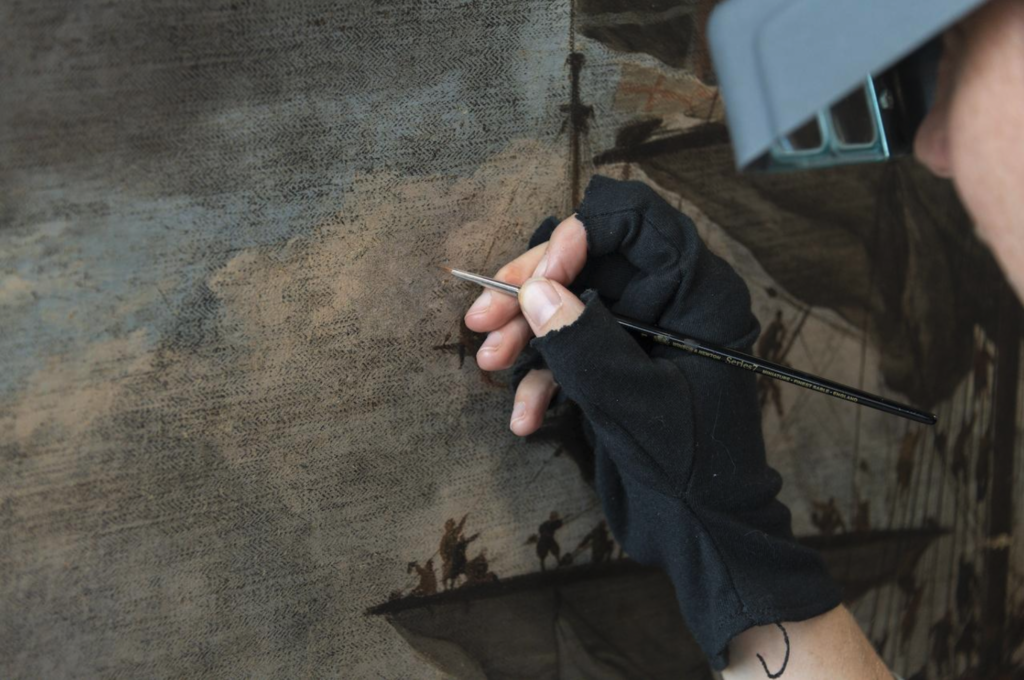The actual process by which any art piece is conserved is a tricky one. For one thing, an artwork must remain mostly original. Audiences don’t come to the Louvre to see a re-creation of the Mona Lisa; they go to see the real painting on the real wood made up of Da Vinci’s real brush strokes. Taking that physicality away from a piece by covering it up with another artist’s work would be inauthentic and rude. Finding a balance though can be hard. If a painting has a lot of damage, how far do you go to restore it, and where do you draw the line?
Would you think a painting with only 0.1% conservation intervention was still original?
How about 2%?
Now how about 40%?
Where is the metaphorical wall that divides an original artist from a piece of art still being their work, if it needs to be edited and re-painted over time by new artists?
Another concern in conservation is that it could leave the piece of art worse off than before. There’s so much weight associated with art. Attempting to alter, cover, or re-furbish too much of any piece could lead to really drastic consequences. There’s something terrifying about being the person who literally holds a priceless painting’s life in their hands. Trying to make changes to a Van Gogh or a Rodin can mean the difference between safely making invisible changes to the piece’s surface, and destroying part of the world’s cultural heritage.
Ultimately, precision is key. Conservators make an effort to only re-touch and recover pieces already damaged or missing. Ideally, anything outside the cracks and distortions gets left totally free. It’s cleaned a little, and then it’s untouched and unpainted. This ensures that the piece can still be attributed to its original artist and preserves as much of the artist’s original style and choices as possible. In a painting, for example, conservators use extremely tiny paint brushes to fill in extremely tiny cracks! The tools fit the damage, and while they take a steady hand, their precision is an advantage, meaning each stroke is calculated and planned. It’s a process that takes months of careful, exhausting work, but it typically ends with the most accurate and respectful result. Below is an example of such a tiny paintbrush being used by a conservator to fill in some very fine damage. The black spots are parts of the paintings that have flaked off or worn down over the years, exposing the under layer of dark primer instead of showing the top, painted layer.

A Royal Visit to the Fleet in the Thames Estuary
Willem van de Velde the Younger. Dutch, 1672.